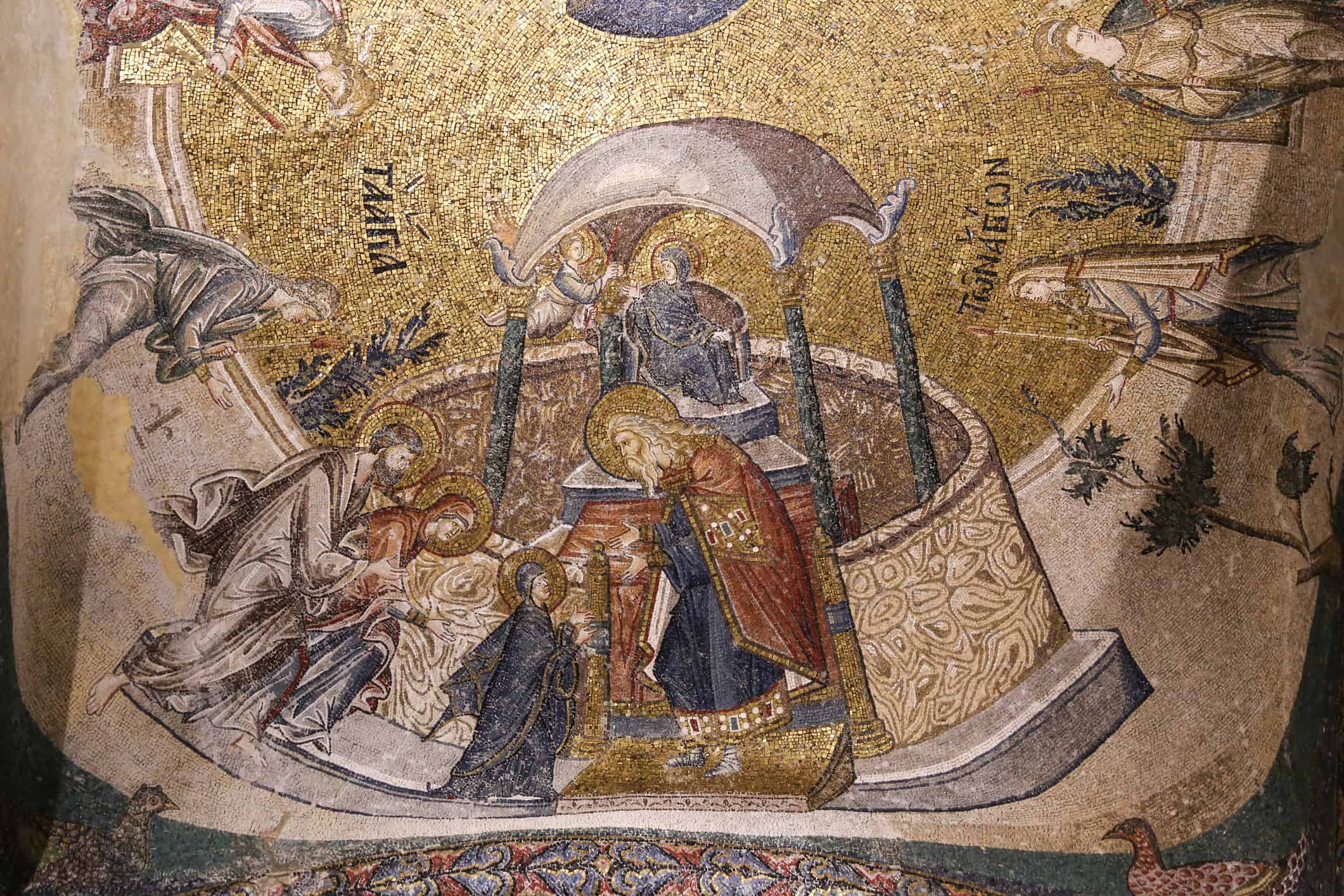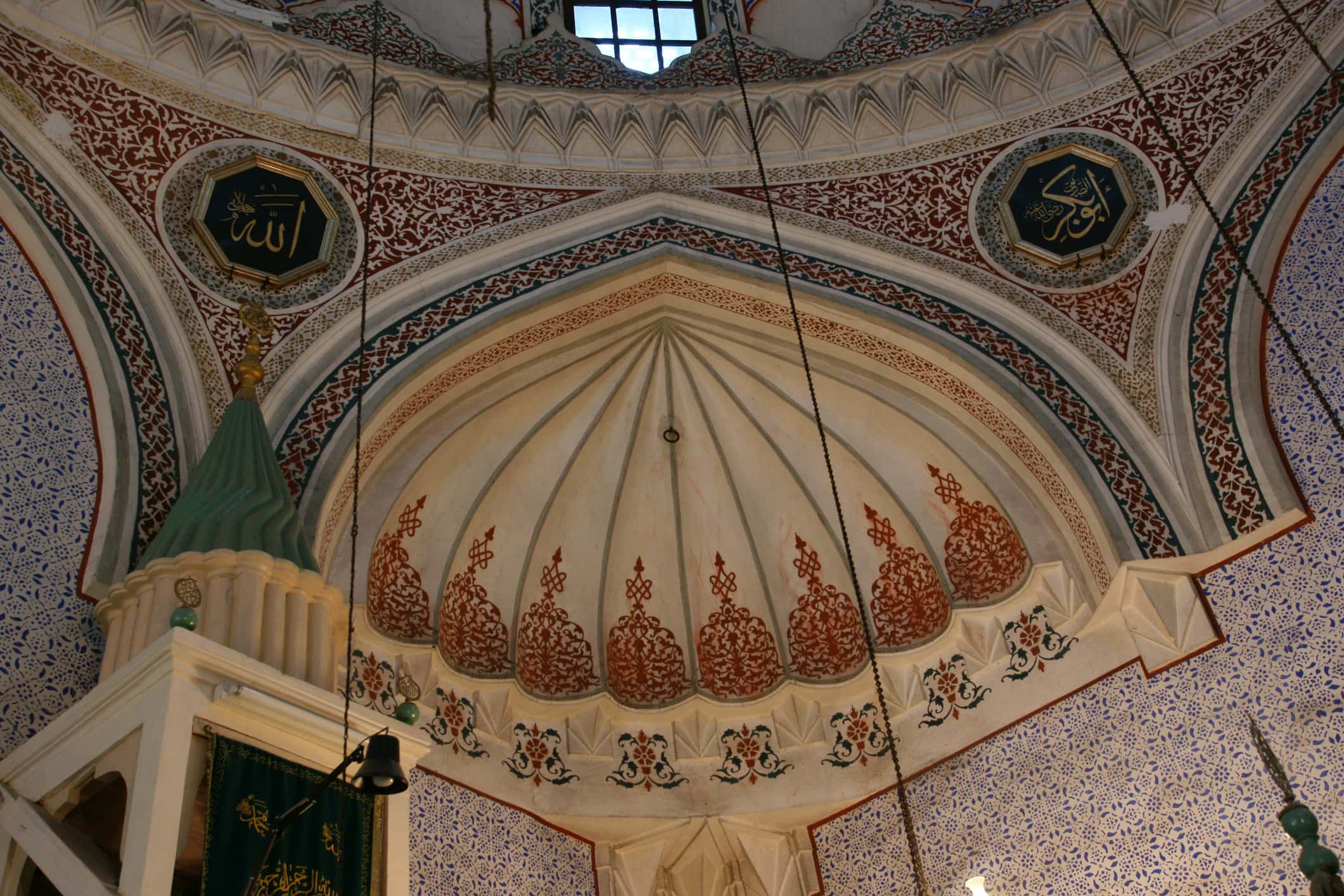From Ancient Times
In 685 BC, Greek settlers from Megara colonized Byzantium or Byzantion. The name comes from the King of Byzas of Magara. This important trading center was located at the only entrance to the Black Sea. Rome besieged the city in 196 AD and Roman Emperor Septimius Severus rebuilt it briefly renaming it Augusta Antonina in honor of his son. Later, the city became Nova Roma. In 330 AD it became Constantinopolis or Constantinople and the new capital of the Roman Empire.
The Byzantine Empire was culturally Greek and, as a result, Greek Orthodox Christian. The construction of the Hagia Sophia of Constantinople made it the largest church in the world for nearly a thousand years. After centuries of decline, in 1453, Sultan Mehmed II, “the Conqueror,” entered the city. After a 53-day siege, it became the new capital of the Ottoman Empire. This forward-thinking leader invited Muslims, Jews, and Christians to coexist and create a cosmopolitan society. Suleiman the Magnificent’s reign was the longest of the Ottoman Empire from 1520 until he died in 1566. Many of his great architectural and artistic accomplishments still survive today. In 1923, the Republic of Turkey came to be, and the capital changed from Istanbul to Ankara.
Architecture
Throughout history, the city’s architecture has been extraordinary. An example of this is its gates, the city walls had 55 of them, the largest being Porta Aurea, translated from Latin to mean Golden Gate. Emperors used the ceremonial gate closest to the Sea of Marmara. Indeed, this special gate built of white marble blocks stood out from all the others made of limestone and brick. A quadriga with elephant statues topped it. Additionally, it had gold doors.
Five Other Names the City Could Go By
Throughout history, the city has had many names depending on the person’s country of origin and the date of reference. People have inhabited this part of the world for many years and in that time Istanbul has had over thirty different names, but these five are the most common:
- Byzantion: the first name possibly from the Greek king Byzas or Byzantas from Megara.
- Byzantium: the Latinized version of Byzantion from conquering Romans during the 1st century AD.
- Augusta Antonina: briefly used to honor the son of Roman emperor Septimius Severus.
- Nova Roma: or New Rome by Roman Emperor Constantine the Great.
- Constantinople: translates to mean “city of Constantine” to honor Constantine the Great and it was unchanged until 1930.
What is the Significance of the Number Seven?
The number seven, to some, signifies spiritual revelations, growing self-awareness, wisdom, and intuition. In addition, it serves to some as a bridge between our mortal realm and the spiritual world. In the Bible, it symbolizes perfection or completion. This may be why the ancients chose Istanbul to be on the seven hills.
Why is Istanbul Called the City on Seven Hills?
Why is Istanbul the City on Seven Hills? Because it is, indeed, built on seven hills. Many cities around the world are built on seven hills. As an example, Rome is also The City of Seven Hills and its ancient city forms the modern capital of Italy. Read on to explore the seven hills of Istanbul!
Sarayburnu Hill

Sarayburnu translates to mean “Palace Point.”
©LALS STOCK/Shutterstock.com
On the first of the seven hills is the ancient city of Byzantium, also called Topkapi Hill, and is now Sultanahmet Square. Sarayburnu translates to mean “Palace Point” and it extends to the Roman site of the Hagia Sophia and the Ottoman Topkapi Palace built by Sultan Mehmed II, the conqueror of Istanbul, during the years 1460 to 1478. It served as the residence of Ottoman sultans and the educational and administrative center of the state until the mid-19th century.
The Stone of Milion here was the zero-kilometer marker for roads leading to the cities of the Roman Empire. In addition, it is the site of the Sultanahmet Mosque (Blue Mosque.) Built by Sultan Ahmed I during the 17th century, it is one of the world’s few six-minareted mosques. Also here are the Ibrahim Pasa Palace (currently a Turkish and Islamic Arts Museum), Hagia Sophia, and the Hippodrome of Constantinople.
Suleymaniye (Beyazit) Hill

The Suleymaniye Mosque was built by Sultan Suleiman the Magnificent.
©nantonov/iStock via Getty Images
The second most prominent hill on the peninsula is 196 feet (60 meters) above sea level and climbs from the shores of the Golden Horn. During Byzantine times the Romans built the Great Nymphaeum in honor of Pagan Spirits called Nymphs as a public sanctuary. The Suleymaniye Mosque was built by Sultan Suleiman the Magnificent from 1550 to 1557. Additionally, this is where the Beyazit Mosque and Istanbul University are.
Cemberlitas Hill

Water pipes of Corlulu Ali Pasa Medresa.
©ihsanGercelman/iStock via Getty Images
The third hill is Cemberlitas, which is 32 feet (10 meters) higher than Sarayburnu Hill and is the site of the Column of Constantine or Burnt Column built during the Byzantine times by Emperor Constantine. He constructed the Cemberlitas column in the year 330, and a statue in his honor stood at the pinnacle. According to legend, a room contains Christian relics hidden beneath it. In addition, it is the site of the Nuru Osmaniye Mosque and Corlulu Ali Pasa Madrasah.
Fatih Hill

The Fatih Mosque was built after the conquest of Istanbul in 1463.
©keladawy/iStock via Getty Images
The fourth hill is Fatih Hill where Sultan Mehmet II (Fatih the Conqueror) began construction of the Fatih Mosque after the conquest of Istanbul in 1463. This hill provides a view of the historic walls of the city. During Byzantine times the Church of the Holy Apostles was here, however, the Fatih Mosque replaced it. According to legend, Emperor Constantine desired burial at the Church of the Holy Apostles, however, this has not been verified. In addition, Sultan Mehmet II’s final resting place is in the garden of the Fatih Mosque.
Yavuz Selim Hill

The Church of St. George is a magnificent historical structure on Yavuz Selim Hill.
©boggy22/iStock via Getty Images
The fifth hill rises from the Golden Horn, the northern boundary of ancient Byzantine, and is where conqueror Yavuz Sultan Selim of Egypt rests in the garden of the Yavuz Sultan Selim Mosque. The mosque slopes up from the Golden Horn and is the closest hill to it. Yavuz Sultan Selim began its construction and his son Suleiman the Magnificent completed it. Other architectural sites include the Church of St. George, Fethiye Mosque or Pammakaristos Church, a Byzantine church converted into a mosque, and the Cistern of Aspar or the Sunken Garden of Sultan Selim.
Edirnekapi Hill

The Byzantines built the Chora Church in the 11
thcentury.
©EvrenKalinbacak/iStock via Getty Images
The sixth and highest hill in Istanbul is the site of the Mihrimah Sultan Mosque, Mihrimah translates to mean “Sun” and “Moon.” Also on this hill are Kariye Camii (Chora Mosque) and Tekfur Palace, the remaining structure of the Blakhernai Palace. The Byzantines built the Chora Church in the 11th century, its name translates to “the widest sphere that includes the spiritual universe.”
Kocamustafapasa Hill

The Haseki Mosque was built for Hurrem Sultan, wife of Suleiman the Magnificent.
©sinan dogan/iStock via Getty Images
The seventh hill is closest to the Sea of Marmara and reaches nearly 196 feet (60 meters) above sea level. This is where the Grand Vizier Cerrah Mehmed Pasa built the Cerrahpasa Mosque. However, the main attraction is the Haseki Mosque. Built for Hurrem Sultan wife of Suleiman the Magnificent, the first woman in court involved in politics. In addition, this site was famous for its slave bazaar in Byzantine and Ottoman times until the 19th century.
Why is Istanbul Called the City on Seven Hills? (Plus 5 Other Names the City Could Go By)
| Name of Hill | Historical Structures |
|---|---|
| Sarayburnu Hill | Topkapi Palace, Milion Stone, Sultanahmet Mosque, Ibrahim Pasa Palace, Hagia Sophia, and the Hippodrome of Constantinople |
| Suleymaniye (Beyazit) Hill | Beyazit Mosque, Istanbul University, and the Suleymaniye Mosque |
| Cemberlitas Hill | Column of Constantine, Nur-u Osmaniye Mosque and Corlulu Ali Pasa Madrasah |
| Fatih Hill | Fatih Mosque and Church of the Holy Apostles |
| Yavuz Selim Hill | Yavuz Sultan Selim Mosque, Church of St. George, Fethiye Mosque or Pammakaristos Church, and the Cistern of Aspar |
| Edirnekapi Hill | Mihrimah Sultan Mosque, Kariye Camii, and Tekfur Palace |
| Kocamustafapasa Hill | Cerrahpasa Mosque and the Haseki Mosque |
Thank you for reading! Have some feedback for us? Contact the AZ Animals editorial team.








